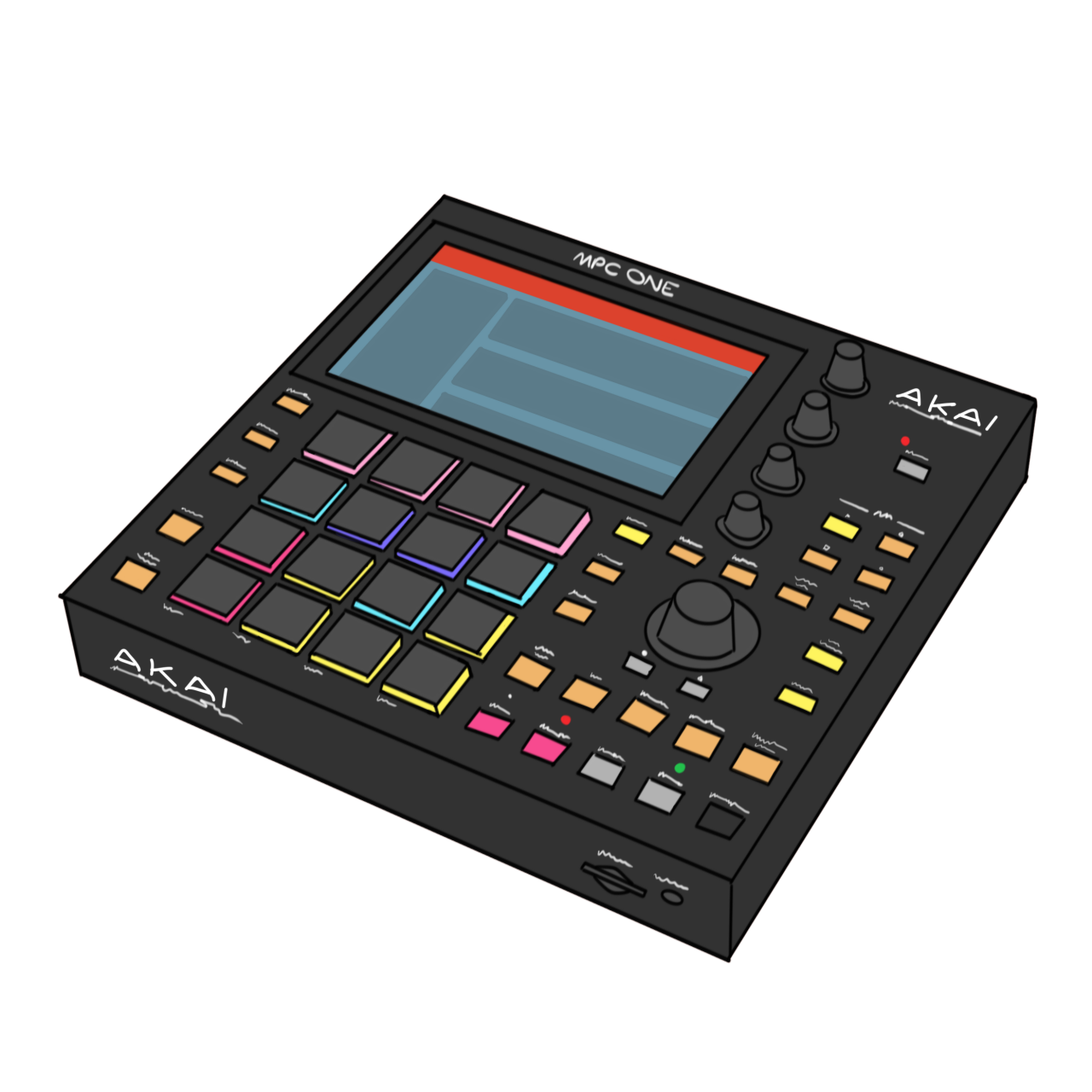illustration by Gracen Hoyle
Daft Punk’s “Harder, Better, Faster, Stronger” has stuck with millions and is a perfect example of how impacting sampling can be. For the longest time, I was under the impression the beat and melody were originally created by Daft Punk. However, after a binging slew of many “Did you know this song sampled THIS song?” videos, I realized the song’s hook was built off a really obscure and hypnotising sample. Edwin Birdsong’s 1979 jazz-funk song “Cola Bottle Baby” is responsible for the infectious bassline found in “Harder.” I highly recommend listening to this song and comparing them side-by-side for a good example of one form of sampling. On top of that, Kanye West samples Daft Punk’s “Harder” in his hit-track “Stronger.” Both of these songs are absolutely amazing in their own right, and seeing them so intertwined makes me respect each other’s ear for composition more.
Sampling-the act of taking pieces from an existing song, recording, or sound and recreating it in your own track-in music, especially hip-hop, has changed the way many listen to and make music. Although many contend that such a direct imitation of someone else’s work is stealing, the ear and finesse needed to transform a sample requires a control mastery rarer than one might expect. The limits of what sampling allows you to do are overwhelmingly boundless: from taking something as small as a drum break or an otherwise overlooked sound to taking the vocals and chord and chopping it around, sampling allows one to take full advantage of preexisting songs.
After realizing the frequency to which musicians sample other artists, I have found myself overly aware of a song’s composition whenever I listen to music in an attempt to detect a sample. It is common practice for me to stop whatever new song my friends are playing, obsess over a certain aspect of a song because it sounds like something I have heard before, and then waste too much mental energy trying to pinpoint the exact song or sound that was being used. I even have a Spotify playlist dedicated to cataloguing samples I detect. It is always a memorable experience because it makes me realize how often sampling is employed and how often it goes overlooked due to its subtlety.
To elaborate on the versatility of sampling, I will delve into some of my favorite uses of it.
1. Gangsta’s Paradise by Coolio
An undeniably monumental and beautiful composed track, Coolio’s “Gangsta’s Paradise” heavily samples “Pastime Paradise” by Stevie Wonder. This one was striking to realize just because of how direct the sampling was and how Coolio still managed to transform it into his own meaningful anthem.
2. Crazy by Gnarls Barkley
What is one of the most instantly recognizable songs, “Crazy” by Danger Mouse and Cee-lo Green samples the song, melody, and chord structure of “Last Men Standing” by Gianfranco and Gian Piero Reverberi.
3. Workin Out by JID
A melodic and calm song, JID beautifully samples “Don’t Explain” by Helen Merill for the chords, beat, keys, and occasional vocals.
4. The Next Episode by Dr. Dre
“The Next Episode” samples “The Edge” by David McCallum for the famous introduction. “The Next Episode” has been sampled in over 80 songs.
5. No More Parties in LA by Kanye West
This classic is rich with samples, the most noticeable and direct one being “Suzie Thundertussy” by Junie Morrison. Also, Kanye West is credited with usage over 2490 samples throughout his discography.
Check out whosampled.com to see if any of your favorite songs have used a sample. More than likely, they have.







